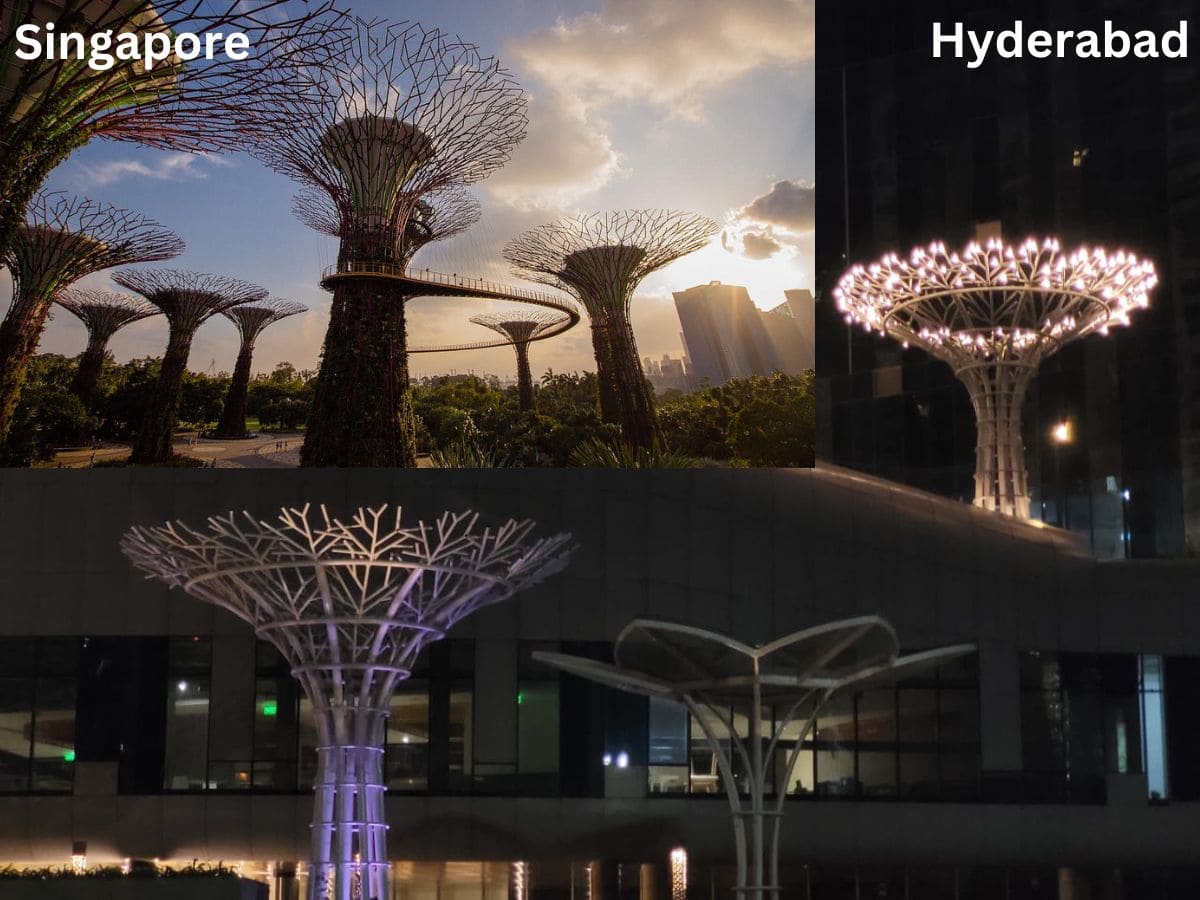
Hyderabad: Many people feel the unprecedented building boom in the IT corridor imitates Singapore, the US, Europe and Dubai in a ‘highly misguided’ search for beauty without purpose or significance. Perhaps, it is true!
Architects and urban planning experts say the structures in the IT corridor are a result of real-estate developers itching to make cash, with the government banking on ‘it attracts investment’ plank. This rush to enhance the landscape with replicas of often purposeless foreign structures is eroding the originality of the city’s architecture.
Not too long ago, a replica of ‘Kindred Spirits,’ a structure commemorating the 1847 donation by the Native American Choctaw people for Irish famine relief, was installed on Raheja Mindspace T-Hub road in Hitec city. Another structure, ‘Supertrees,’ mimics Singapore’s solar-powered structures, yet lacks their purpose.
But why? The straightforward answer is an aimless pursuit of beauty.
Building codes exist in major cities worldwide as government mandates. Their purpose is not to overwhelm citizens with foreign objects but to create buildings that harmonise with the local culture. According to Mohammed Sibghatullah, founder of The Deccan Archive, even post-independence buildings were original, drawing inspiration from around the world. They were never a blemish on our senses, unlike these copy-and-paste models, which lack purpose.
“Its purpose is not to overwhelm the senses of citizens with foreign objects and make buildings that sync with the local culture. Keep aside Nizami architecture, post-independent buildings too, in sync with the building codes, were original ideas inspired from all over the world,” he said.
Architecture is conceivably the only artwork that cannot be ignored or picked if we live in cities like Hyderabad. We can pick a painting or a book, or leave it in the corner if we don’t like it. “With architectural structures, we don’t have a choice. They impose on us and, in this case, mess up our senses because if we choose to live in this city, we have to deal with it,” says urbanist Anant Maringanti, who is the director of Hyderabad Urban Lab.
All the cities are transforming, and citizens are obliged to know the relevance and purpose of these structures. “Mimicry is fine only as long as we know what purpose it serves,” Anant added.
Architects and urban planning experts are in unanimous agreement: Hyderabad’s IT corridor has become a stark testament to the desecration of its unique character. This destruction is manifest in the form of insipid replicas of globally renowned structures parading as expressions of beauty. What’s truly disheartening is that these structures are here to stay, quite possibly outliving us all.
According to urban planners and architects, the western part of Hyderabad is a stark departure from the city’s cultural and sociological essence. The contemporary business infrastructure, while undeniably impressive, stands as an intimidating presence that doesn’t necessarily mirror the city’s identity or its people.
Awareness is the first step toward addressing this issue. Otherwise, these architectural impostors will persist in confounding our sensibilities and tarnishing the city’s global reputation.



